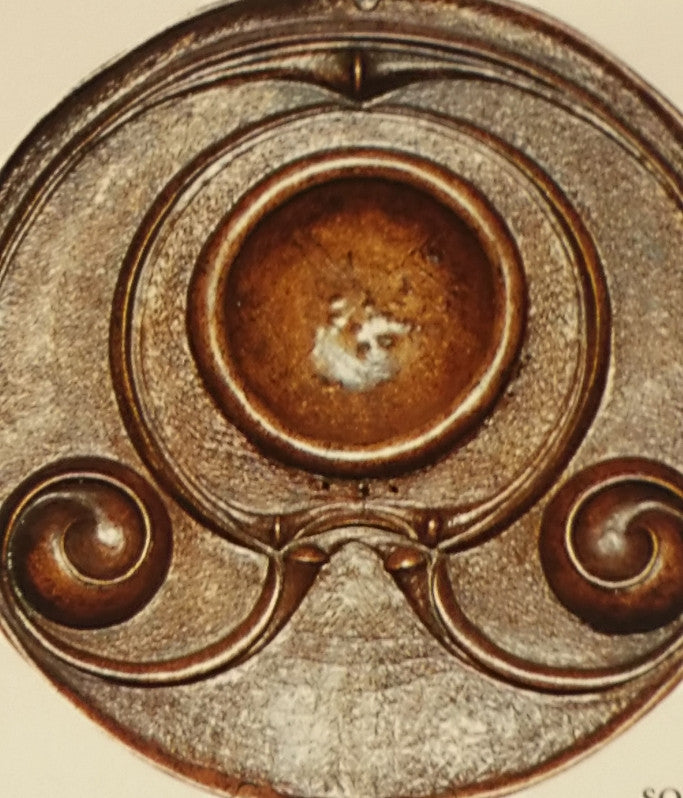
IRELAND EARLY IRISH CRAFTMANSHIP
The carvings that appear on the stones of the great Neolithic tombs in the Boyne Valley include spirals, loops, diamonds, triangles, squares, zigzags and chevrons (V-shaped patterns) they are cut into the pillars and slabs that line the passages and burial chambers, and also into the kerbstones that ring the tomb mounds. A particularly well-known example is the large stone which stands at the entrance to the burial chamber at Newgrange; it is covered with a dense pattern of whorls (ring of leaves or petals/one turn of a spiral) and diamonds that follows the irregularities of the surface, producing an effect resembling an ammonite-like fossil.
The makers of this 'Boyne Valley art' remain unknowable, yet they can be regarded as the founders of a great tradition. Perhaps dating as far back as 3000 BC, their pattern-making, asymmetrical yet balanced, includes many features that would persist in Irish art for millennia.
Metalworking was practised from about 2000 BC in Ireland, where the deposits of copper and gold became the basis for extensive production and exporting. Thanks to the malleability of copper and gold, smiths could use them to make a wide range of useful or purely ornamental artefacts, beginning with sheet-metal objects such as lunulae (crescent-shaped objects, possibly worn round the neck) and flat discs. Techniques improved greatly down the centuries, and the Irish became skilled at soldering, twisting and hammering metal, and producing both large torcs(collars or necklaces) and a variety of delicate fasteners.
By the 8th century BC Irish smiths were able to create indisputable masterpieces. These included 'lock rings', made with gold wire so thin that the separate threads only show up under a magnifying glass, and the well known 'Gleninsheen Gold Collar' a crescent filled with regular ribbing and exquisitely hammered raised patterns of threads and circles, with a beautifully crafted disc at each end. Irish mastery of these arts was, if anything, enhanced in the centuries BC, when the island became part of the Celtic world.